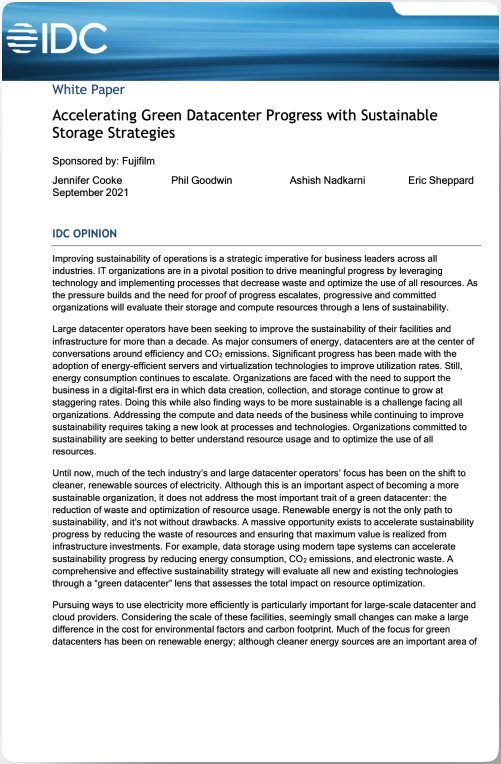

Learn What Can Be Done to Achieve Sustainable Storage
Understand how improving sustainability of IT operations is a strategic imperative for business leaders. In the face of relentless data growth and escalating energy consumption, learn what can be done to achieve sustainable storage.

See How Energy and Resource Conservation Can Help Your Organization Reduce Costs and Carbon Emissions
Learn why renewable energy is only part of the solution. See how energy and resource conservation can help your organization reduce costs and carbon emissions in pursuit of your green data center goals.

Discover How Shifting Data to Tape Can Accelerate Sustainability Progress
Discover how shifting more data to tape systems can accelerate sustainability progress by dramatically reducing energy consumption and CO2 emissions.
Data growth and impact on energy consumption
The amount of data we create is growing at a rate of 20 – 43 percent, while many large organizations are seeing their data double every two years. Global data to be stored is expected to exceed 11.0 zettabytes by 2025, up from just 2.0 zettabytes in 2016.
Total energy consumption for data centers grew 31% from 2017 to 2020 and an estimated 117% for hyperscale operators.
Renewable energy is just the start
Renewable energy can’t come online fast or cheaply enough to keep up with the rapid growth of data and power consumption needed to support digital transformation. Energy conservation and the optimization of energy use must also be the focus of every large data center operator.
Why tape should be included in your sustainability strategy
Tape supports green data center initiatives by storing data offline or nearline in active archive tiers of storage, which consume a minimal amount of energy. At the same time, tape is the easiest way to establish air gap protection against ransomware hackers.
Understanding the impact of moving more data to tape
In a scenario where more data is moved to tape, CO2 emissions can be reduced by as much as 43.7% by the year 2030. A transition to tape comes with the potential to avoid 664 million metric tons of carbon emissions, equal to the annual greenhouse gas emissions from 144 million passenger cars — or the amount of energy used by 80 million homes.